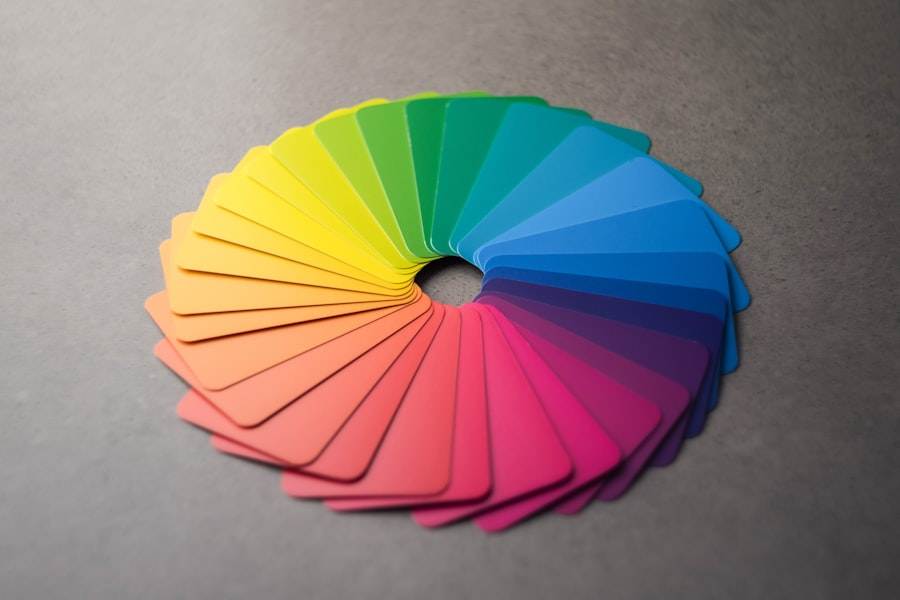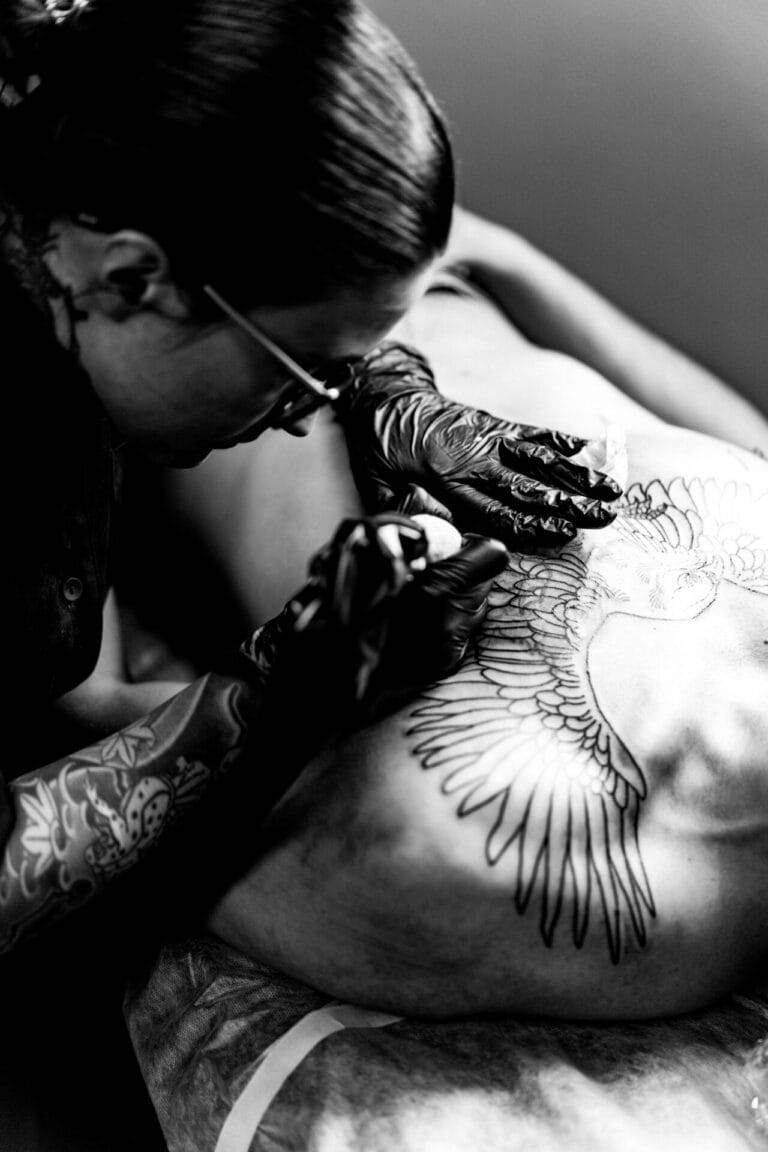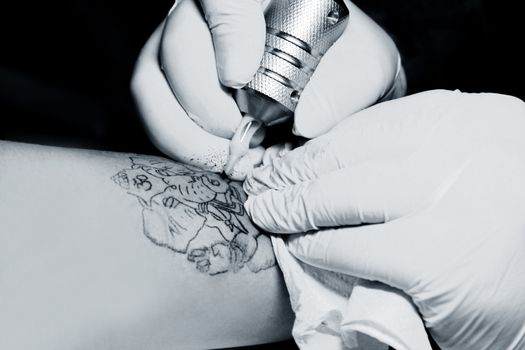
When it comes to tattoos, understanding your skin tone is crucial for selecting designs and colors that will not only look stunning but also stand the test of time. Skin tone can be broadly categorized into three main types: fair, medium, and deep. Each of these categories has its own unique characteristics that can influence how a tattoo appears once inked.
Fair skin often has a pink or peachy hue, while medium skin can range from olive to tan. Deep skin tones, on the other hand, can vary from rich brown to ebony. Recognizing where you fall on this spectrum can help you make informed decisions about your tattoo.
Moreover, skin tone is not just about the surface color; it also plays a significant role in how colors are perceived. For instance, vibrant colors may pop beautifully on lighter skin but could appear muted on darker skin. This is why it’s essential to consider your natural complexion when planning a tattoo.
A design that looks striking on one person may not have the same effect on another due to differences in skin tone. Therefore, taking the time to understand your skin tone can lead to a more satisfying tattoo experience.
Key Takeaways
- Understanding your skin tone is the first step in choosing the right colors for your wardrobe and makeup.
- Identifying warm and cool undertones can help you determine which colors will complement your skin tone the best.
- For warm undertones, choose colors like earthy tones, warm reds, and golden yellows to enhance your complexion.
- Cool undertones look great in colors like blues, purples, and cool greens, as well as jewel tones like emerald and sapphire.
- Neutral colors like black, white, and gray can flatter all skin tones and serve as a versatile base for any outfit.
Identifying Warm and Cool Undertones
Beyond the surface color of your skin, undertones are another critical aspect to consider when choosing a tattoo. Undertones are the subtle hues that lie beneath the skin’s surface and can be classified as warm, cool, or neutral. Warm undertones typically have hints of yellow, peach, or golden shades, while cool undertones lean towards pink, red, or blue hues.
Neutral undertones are a blend of both warm and cool tones, making them versatile for various color choices. Identifying your undertone can be done through several methods. One popular technique is the vein test: by examining the veins on your wrist in natural light, you can determine your undertone based on their color.
If your veins appear greenish, you likely have warm undertones; if they look bluish or purple, you probably have cool undertones. If you find it challenging to determine your undertone through this method, consider how certain colors look against your skin when wearing clothing or makeup. This awareness can guide you in selecting tattoo colors that will complement your natural complexion.
Choosing Colors for Warm Undertones

For those with warm undertones, certain colors can enhance the natural glow of your skin. Earthy tones such as oranges, yellows, and warm reds tend to look particularly striking against warm skin tones. These colors not only harmonize with the underlying warmth of your complexion but also create a vibrant contrast that draws attention to the tattoo.
Additionally, gold and bronze inks can add an extra layer of richness to designs, making them stand out beautifully. When selecting designs for warm undertones, consider incorporating floral motifs or sun-inspired elements that naturally align with these colors. Warm-toned tattoos can evoke feelings of warmth and positivity, making them ideal for individuals who want their body art to reflect their personality.
However, it’s essential to keep in mind that while bold colors can be captivating, subtle shades like peach or coral can also create a soft and elegant look that complements warm undertones without overwhelming them.
Choosing Colors for Cool Undertones
Individuals with cool undertones have a different palette to work with when it comes to tattoo colors. Cool tones such as blues, purples, and greens are particularly flattering for those with pink or blue undertones in their skin. These colors not only enhance the natural coolness of the complexion but also provide a striking contrast that can make tattoos pop.
For example, a deep blue or violet ink can create a stunning visual effect against cool-toned skin. In addition to traditional colors, consider using silver or gray inks for added depth and dimension in your tattoo design. These shades can provide a modern twist while still complementing the cool undertones of your skin.
When choosing designs, think about incorporating elements like water themes or celestial motifs that naturally align with cooler color palettes. Ultimately, selecting colors that resonate with your cool undertones will ensure that your tattoo looks vibrant and fresh for years to come.
Neutral Colors for All Skin Tones
Neutral colors offer a versatile option for individuals with varying skin tones and undertones. Shades like black, gray, and white are universally flattering and can be used effectively in tattoo designs regardless of your complexion. Black ink is particularly popular due to its boldness and longevity; it tends to age well and remains striking over time.
Gray ink can add subtlety and sophistication to designs, while white ink can create delicate highlights or intricate details. Incorporating neutral colors into your tattoo design allows for greater flexibility in terms of style and placement. For instance, black and gray tattoos can range from traditional styles like tribal or geometric patterns to more intricate designs like portraits or landscapes.
The beauty of neutral colors lies in their ability to adapt to various themes while maintaining a timeless quality. This makes them an excellent choice for anyone looking to invest in body art that will remain relevant and appealing throughout the years.
Considering Hair and Eye Color

While skin tone and undertone are essential factors in choosing tattoo colors, hair and eye color should not be overlooked. These features can significantly influence how a tattoo appears on your body. For example, individuals with dark hair may find that bold colors stand out more prominently against their hair than lighter shades would.
Conversely, those with lighter hair may prefer softer hues that complement their overall appearance. Eye color also plays a role in determining which tattoo colors will be most flattering. For instance, blue-eyed individuals might find that shades of blue or green enhance their eye color beautifully, while those with brown eyes may prefer warmer tones that create a harmonious balance with their features.
By considering all aspects of your appearance—skin tone, hair color, and eye color—you can create a cohesive look that enhances your natural beauty while showcasing your unique style through body art.
Experimenting with Different Shades
One of the most exciting aspects of choosing a tattoo is the opportunity to experiment with different shades and hues. Before committing to a specific design or color palette, consider testing out temporary tattoos or body paint in various shades to see how they interact with your skin tone and undertone. This hands-on approach allows you to visualize how different colors will look on your body without making a permanent decision.
Additionally, don’t hesitate to consult with your tattoo artist about color options and combinations that may work well for you. Experienced artists often have valuable insights into how certain inks will appear on different skin types and can recommend shades that will enhance your design while complementing your features. By being open to experimentation and collaboration with your artist, you can discover unique color combinations that truly resonate with you.
Seeking Professional Advice
Finally, seeking professional advice is an essential step in ensuring that you choose the right colors for your tattoo. Tattoo artists possess extensive knowledge about inks and how they interact with various skin tones and undertones. They can provide guidance on which colors will work best for your specific complexion and help you navigate any concerns you may have about fading or longevity.
Moreover, professional artists often have portfolios showcasing their previous work, allowing you to see how different colors look on various skin tones. This visual reference can be incredibly helpful in making informed decisions about your tattoo design and color choices. Ultimately, collaborating with a skilled artist will not only enhance the quality of your tattoo but also ensure that it reflects your personal style while complementing your unique features beautifully.
FAQs
What is skin tone?
Skin tone refers to the natural color of a person’s skin, which is determined by the amount of melanin present in the skin. Melanin is the pigment that gives skin its color.
How can I determine my skin tone?
You can determine your skin tone by looking at the undertones of your skin. There are three main categories of undertones: cool, warm, and neutral. Cool undertones have hints of pink, red, or blue, warm undertones have hints of yellow, peach, or gold, and neutral undertones have a mix of both cool and warm undertones.
What colors are best for cool skin tones?
Cool skin tones look best in colors with blue or purple undertones, such as jewel tones like sapphire, emerald, and amethyst. Pastel shades like lavender and mint also complement cool skin tones.
What colors are best for warm skin tones?
Warm skin tones look best in colors with yellow or orange undertones, such as earthy tones like terracotta, olive, and mustard. Warm skin tones also look great in rich, warm shades like coral, peach, and golden yellow.
What colors are best for neutral skin tones?
Neutral skin tones have the flexibility to wear a wide range of colors, including both cool and warm tones. They can experiment with a variety of colors, from soft pastels to bold jewel tones.
What are some general tips for choosing the right colors for my skin tone?
Some general tips for choosing the right colors for your skin tone include considering the undertones of your skin, experimenting with different shades to see what complements your complexion, and paying attention to how certain colors make your skin appear. It’s also helpful to consider the season and occasion when choosing colors for your outfit.






